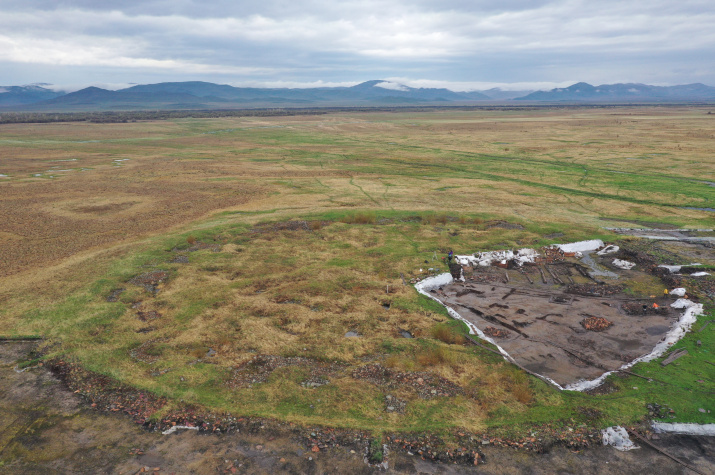Elements of horse harness, horse bones, numerous traces of animal and human sacrifices are the finds of the new fourth field season of the Tuva expedition studying the Tunnug kurgan. The items date back to the Scythian time, to around the 9th century BC. Excavations of the embankment are carried out from the periphery. According to assumptions, the most valuable items are awaiting archaeologists at the base of the kurgan.
The Tuva kurgan Tunnug is one of the cult buildings of the Valley of the Kings. The monuments of the Scythian nomadic civilization that existed in the 9th-4th centuries BC in the vastness from the Northern Black Sea coast to the Altai Mountains have been preserved here. The kurgan is located in the floodplain of the Tunnug and Uyuk rivers, near the village of Chkalovka in the Piy-Khem region of the Tuva Republic. In 2018, the Institute of History of Material Culture of the Russian Academy of Sciences (IHMC RAS) together with the Russian Geographical Society assembled the first archaeological expedition, whose task was to find and study the burials. In 2021, the expedition opened the fourth field season.
The kurgan was discovered back in 1971, but it was problematic to start excavations due to the fact that the area around is very swampy. Due to the peculiarities of its location, Tunnug was never plundered, but scientists are struggling with high water levels.
"Excavations a meter below the groundwater level, as it turned out, are not difficult. Deeper, of course, problems begin. This season the Uyuk met us with high water from the very beginning. Every year everything is different," comments the head scientist of the expedition, senior researcher at IHMC RAS Timur Sadykov.
The entire excavation area was divided into 16 sectors, looped from the periphery to the center. At the moment, six sectors located around the kurgan have been studied, and the excavation of the embankment is underway. According to preliminary data, the Tunnug burial dates back to the 9th century BC, but the burials found around it date back to the beginning of our era and the Middle Ages. Nevertheless, judging by the finds, the most valuable things are awaiting the scientists at the base: presumably, the kurgan stands on permafrost, so there is a possibility of discovering preserved organic matter under its stone embankment.
The finds of this season confirm the hypothesis of the existence of a complex of horse and human sacrifices here: elements of harness and horse bones were found – the closer to the base, the more of them. Excavation of two more sectors is planned this year, the rest will be distributed approximately over three seasons.




